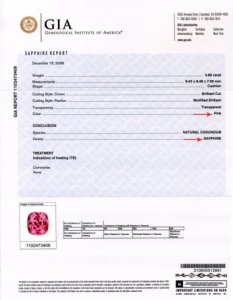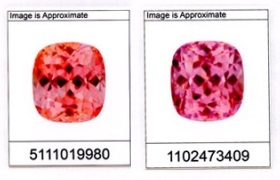LimitedGems
Rough_Rock
- Joined
- Dec 28, 2013
- Messages
- 51
The reports and pictures are not mine but I want to share the information as this is akward to me. I find it quite strange, as far as I know, there has to be 3 persons (graders) to grade one single gemstone. Three GIA graders have to agree with eachother when it comes to clarity and color, to even issue a GIA Report. Two individual reports will have a total of 6 graders.
When it comes to Padparadscha's, it has to consist of only Pink Orange or Orange Pink. But at the reports it were firstly graded as pink and then suddenly, a year later, the orange just "popped" up or what?
Three people see it as pink and three other can see orange in it? At the same Lab? If I read the reports correctly, it were even graded in Carlsbad both times. Dont them all follow the same strict rules and guidelines when it comes especially to Padparadscha's or Rubies?
Even the color in the pictures are different



When it comes to Padparadscha's, it has to consist of only Pink Orange or Orange Pink. But at the reports it were firstly graded as pink and then suddenly, a year later, the orange just "popped" up or what?
Three people see it as pink and three other can see orange in it? At the same Lab? If I read the reports correctly, it were even graded in Carlsbad both times. Dont them all follow the same strict rules and guidelines when it comes especially to Padparadscha's or Rubies?
Even the color in the pictures are different










300x240.png)